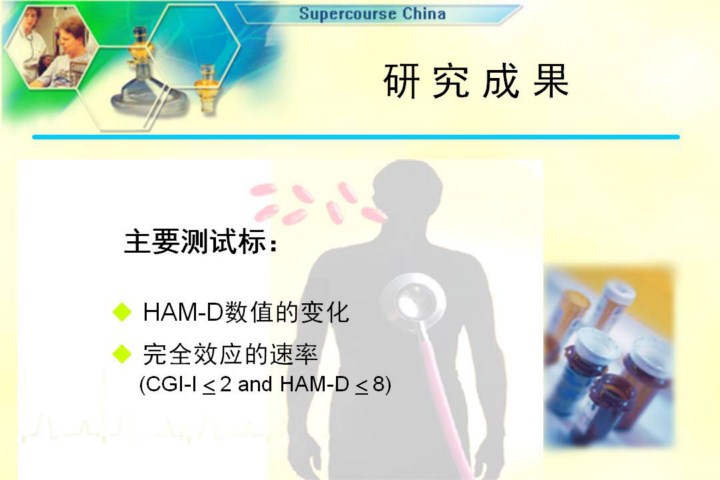| front |1 |2 |3 |4 |5 |6 |7 |8 |9 |10 |11 |12 |13 |14 |15 |16 |17 |18 |19 |20 |21 |22 |23 |24 |25 |26 |27 |28 |29 |review |
 |
We will hear in the next few weeks, because this article is finishing peer review, how this turns out. But however it turns out, I believe it will set a better standard for figuring out how to study complementary and alternative practices, because we’ve picked patients carefully, and we’ve used rigorous end points. In this study, we’ve used the Hamilton Depression Scale as the primary end point and the change in that, and as a second end point, the rate of complete response, total amelioration of all depressive features in the clinical global impression scale and the HAM-D scale. This is the way you study anti-depressants. 研究结果 主要测试标 HAM-D数值的变化 完全效应的速率 (CG1-1≤2,且HAM-D≤8)
|